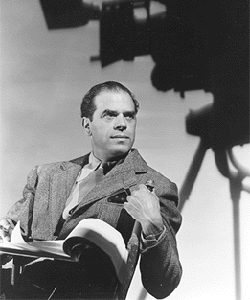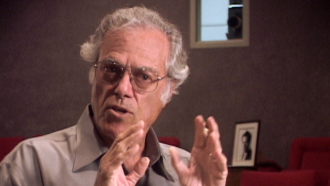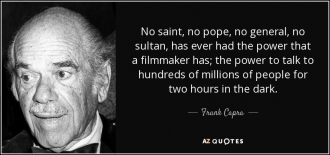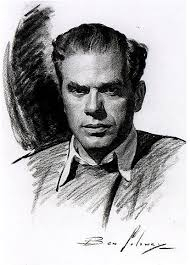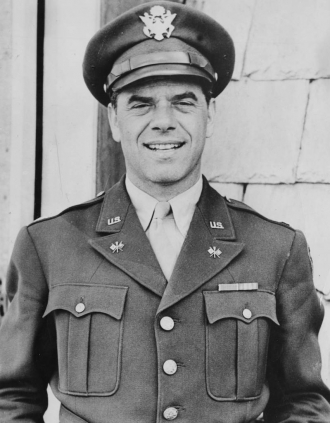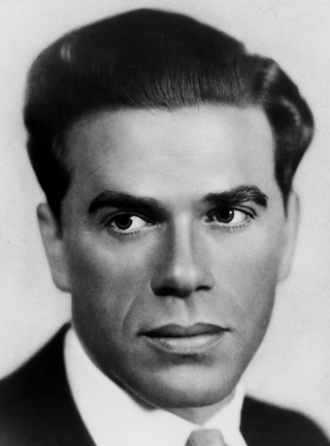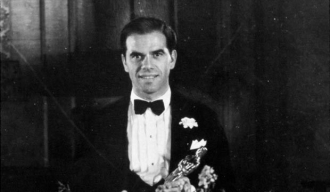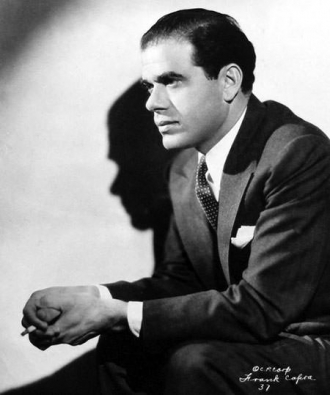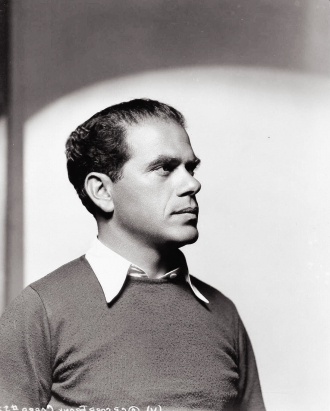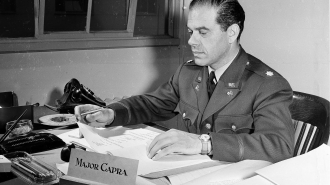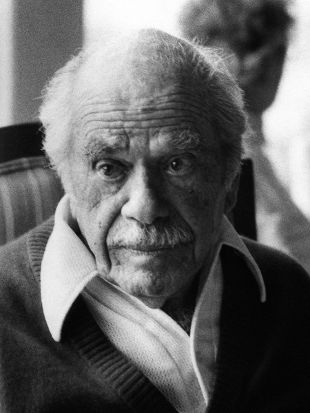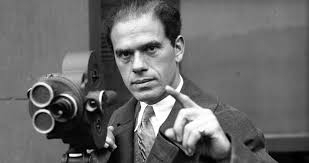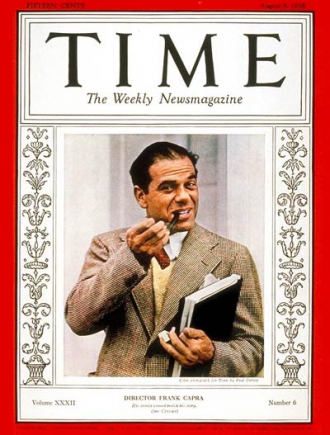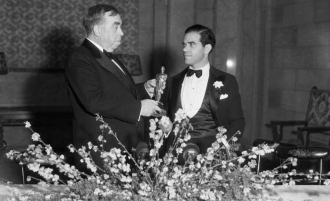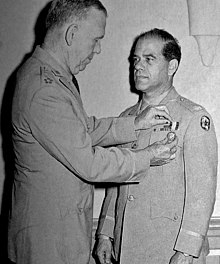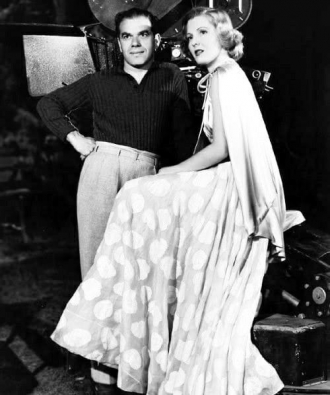FRANK CAPRA
Born May 18, 1897 in Bisacquino, Sicily, Italy
Died September 3, 1991 in La Quinta, California, USA (heart attack in his sleep)
Birth Name Francesco Rosario Capra
Height 5' 5½" (1.66 m)
One of seven children, Frank Capra was born on May 18, 1897, in Bisacquino, Sicily. On May 10, 1903, his family left for America aboard the ship Germania, arriving in New York on May 23rd.
The family boarded a train for the trip to California, where Frank's older brother Benjamin was living.
On June 3, the Capra family arrived at the Southern Pacific station in Los Angeles, at the time, a small city of approximately 102,000 people. The family stayed with Capra's older brother Benjamin, and on September 14, 1903, Frank began his schooling at the Castelar Elementary school. In 1909, he entered Los Angeles' Manual Arts High School. Capra made money selling newspapers in downtown L.A. after school and on Saturdays, sometimes working with his brother Tony. Capra was singled out for a cash award of $250 for having the highest grades in the school. Part of his prize was a six-week trip across the U.S. and Canada. When Capra's father, Turiddu, died in 1916, Capra started working at the campus laundry to make money.
While living at his mother's house, Capra took on a wide variety of manual laboring jobs, including errand boy and ditch digger, even working as an orange tree pruner at 20 cents a day. He continued to be employed as an extra at movie studios and as a prop buyer at an independent studio at Sunset Boulevard and Gower Street, which later became the home of Columbia Pictures, where Capra would make his reputation as the most successful movie director of the 1930s.
Still based in San Francisco in 1921, producer Walter Montague hired Capra for $75 per week to help direct the short movie The Ballad of Fisher's Boarding House (1922), which was based on a poem by Rudyard Kipling. Montague, a former actor, had the dubious idea that foggy San Francisco was destined to become the capital of movies, and that he could make a fortune making movies based on poems. Capra helped Montague produced the one-reeler, which was budgeted at $1,700 and subsequently sold to the Pathe Exchange for $3,500. Capra quit Montague when he demanded that the next movie be based upon one of his own poems.
Unable to find another professional film-making job, Capra hired himself out as a maker of shorts for the public-at-large while working as an assistant at Walter Ball's film lab. Finally, in October 1921, the Paul Gerson Picture Corp. hired him to help make its two-reel comedies, around the time that he began dating the actress Helen Edith Howe, who would become his first wife. Capra continued to work for both Ball and Gerson, primarily as a cutter. On November 25, 1923, Capra married Helen Howell, and the couple soon moved to Hollywood.
In April of 1927, Capra and his wife Helen split up, and Capra went off to New York to direct For the Love of Mike (1927) for First National, his first picture with Claudette Colbert. The director and his star did not get along, and the film went over budget. Subsequently, First National refused to pay Capra, and he had to hitchhike back to Hollywood. The film proved to be Capra's only genuine flop.
By September 1927, he was back working as a writer for Mack Sennett, but in October, he was hired as a director by Columbia Pictures President and Production Chief Harry Cohn for $1,000. The event was momentous for both of them, for at Columbia Capra would soon become the #1 director in Hollywood in the 1930s, and the success of Capra's films would propel the Poverty Row studio into the major leagues. But at first, Cohn was displeased with him. When viewing the first three days of rushes of his first Columbia film, That Certain Thing (1928), Cohn wanted to fire him as everything on the first day had been shot in long shot, on the second day in medium shot, and on the third day in close-ups.
"I did it that way for time," Capra later recalled. "It was so easy to be better than the other directors, because they were all dopes. They would shoot a long shot, then they would have to change the setup to shoot a medium shot, then they would take their close-ups. Then they would come back and start over again. You lose time, you see, moving the cameras and the big goddamn lights. I said, 'I'll get all the long shots on that first set first, then all the medium shots, and then the close-ups.' I wouldn't shoot the whole scene each way unless it was necessary. If I knew that part of it was going to play in long shot, I wouldn't shoot that part in close-up. But the trick was not to move nine times, just to move three times. This saved a day, maybe two days."
Cohn decided to stick with Capra (he was ultimately delighted at the picture and gave Capra a $1,500 bonus and upped his per-picture salary), and in 1928, Cohn raised his salary again, now to to $3,000 per picture after he made several successful pictures, including Submarine (1928). The Younger Generation (1929), the first of a series of films with higher budgets to be directed by Capra, would prove to be his first sound film, when scenes were reshot for dialogue. In the summer of that year, he was introduced to a young widow, Lucille Warner Reyburn (who became Capra's second wife Lou Capra). He also met a transplanted stage actress, Barbara Stanwyck, who had been recruited for the talkie but had been in three successive unsuccessful films and wanted to return to the New York stage. Harry Cohn wanted Stanwyck to appear in Capra's planned film, Ladies of Leisure (1930), but the interview with Capra did not go well, and Capra refused to use her.
Stanwyck went home crying after being dismissed by Capra, and her husband, a furious Frank Fay, called Capra up. In his defense, Capra said that Stanwyck didn't seem to want the part. According to Capra's 1961 autobiography, "The Name Above the Title," Fay said, "Frank, she's young, and shy, and she's been kicked around out here. Let me show you a test she made at Warner's." After viewing her Warners' test for The Noose (1928), Capra became enthusiastic and urged Cohn to sign her. In January of 1930, Capra began shooting Ladies of Leisure (1930) with Stanwyck in the lead. The movies the two made together in the early '30s established them both on their separate journeys towards becoming movieland legends. Though Capra would admit to falling in love with his leading lady, it was Lucille Warner Reyburn who became the second Mrs. Capra. "You're wondering why I was at that party. That's my racket. I'm a party girl. Do you know what that is?"
Stanwyck played a working-class "party girl" hired as a model by the painter Jerry, who hails from a wealthy family. Capra had written the first draft of the movie before screenwriter Jo Swerling took over. Swerling thought the treatment was dreadful. According to Capra, Swerling told Harry Cohn, when he initially had approached about adapting the play "Ladies of the Evening" into Capra's next proposed film, "I don't like Hollywood, I don't like you, and I certainly don't like this putrid piece of gorgonzola somebody gave me to read. It stunk when Belasco produced it as Ladies of Leisure (1930), and it will stink as Ladies of Leisure, even if your little tin Jesus does direct it. The script is inane, vacuous, pompous, unreal, unbelievable
- and incredibly dull."
Capra, who favored extensive rehearsals before shooting a scene, developed his mature directorial style while collaborating with Stanwyck, a trained stage actress whose performance steadily deteriorated after rehearsals or retakes. Stanwyck's first take in a scene usually was her best. Capra started blocking out scenes in advance, and carefully preparing his other actors so that they could react to Stanwyck in the first shot, whose acting often was unpredictable, so they wouldn't foul up the continuity. In response to this semi-improvisatory style, Capra's crew had to boost its level of craftsmanship to beyond normal Hollywood standards, which were forged in more static and prosaic work conditions. Thus, the professionalism of Capra's crews became better than those of other directors. Capra's philosophy for his crew was, "You guys are working for the actors, they're not working for you."
After "Ladies of Leisure," Capra was assigned to direct Platinum Blonde (1931) starring Jean Harlow. The script had been the product of a series of writers, including Jo Swerling (who was given credit for adaptation), but was polished by Capra and Robert Riskin (who was given screen credit for the dialogue). Along with Jo Swerling, Riskin would rank as one of Capra's most important collaborators, ultimately having a hand in 13 movies. (Riskin wrote nine screenplays for Capra, and Capra based four other films on Riskin's work.)

